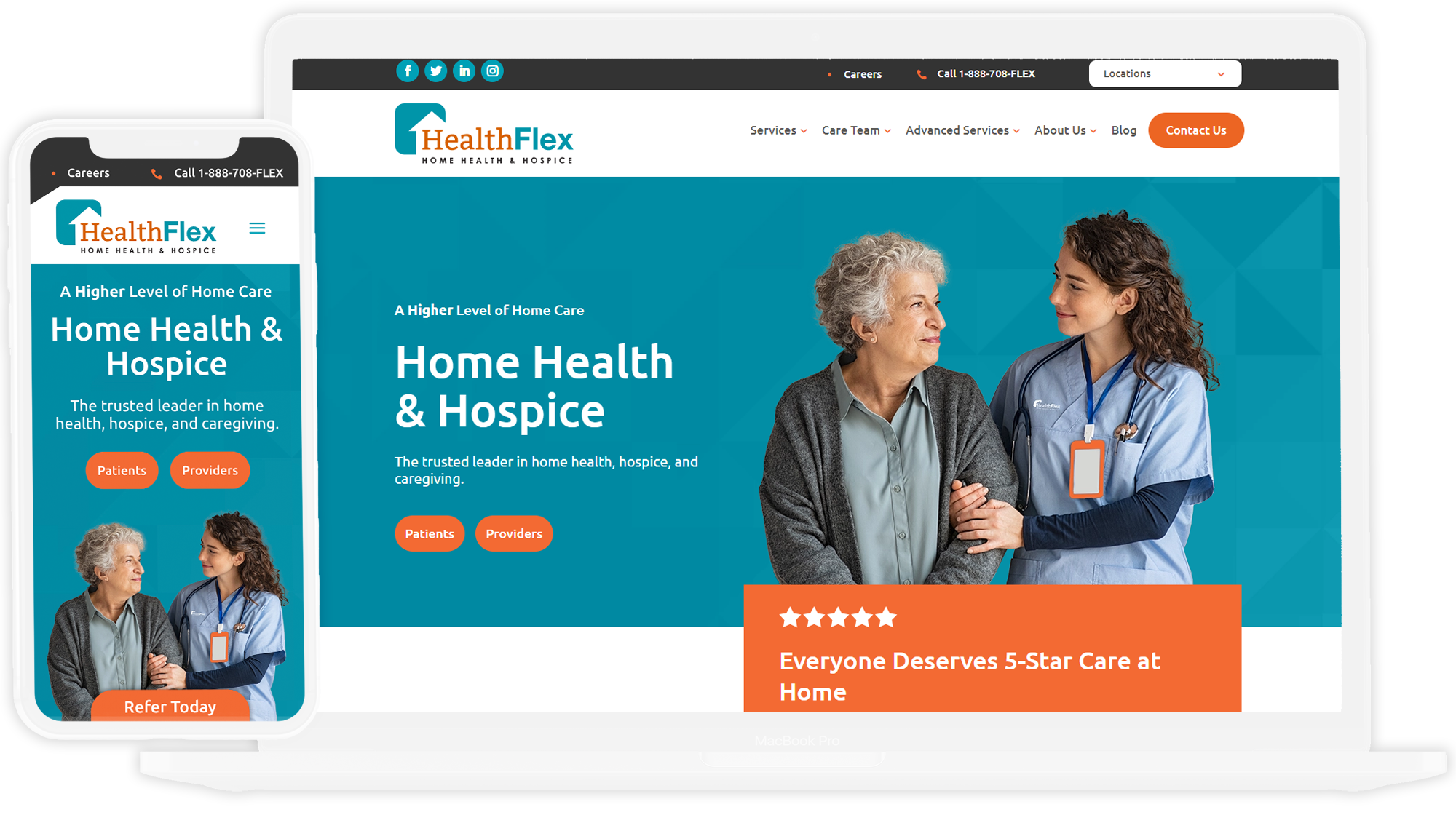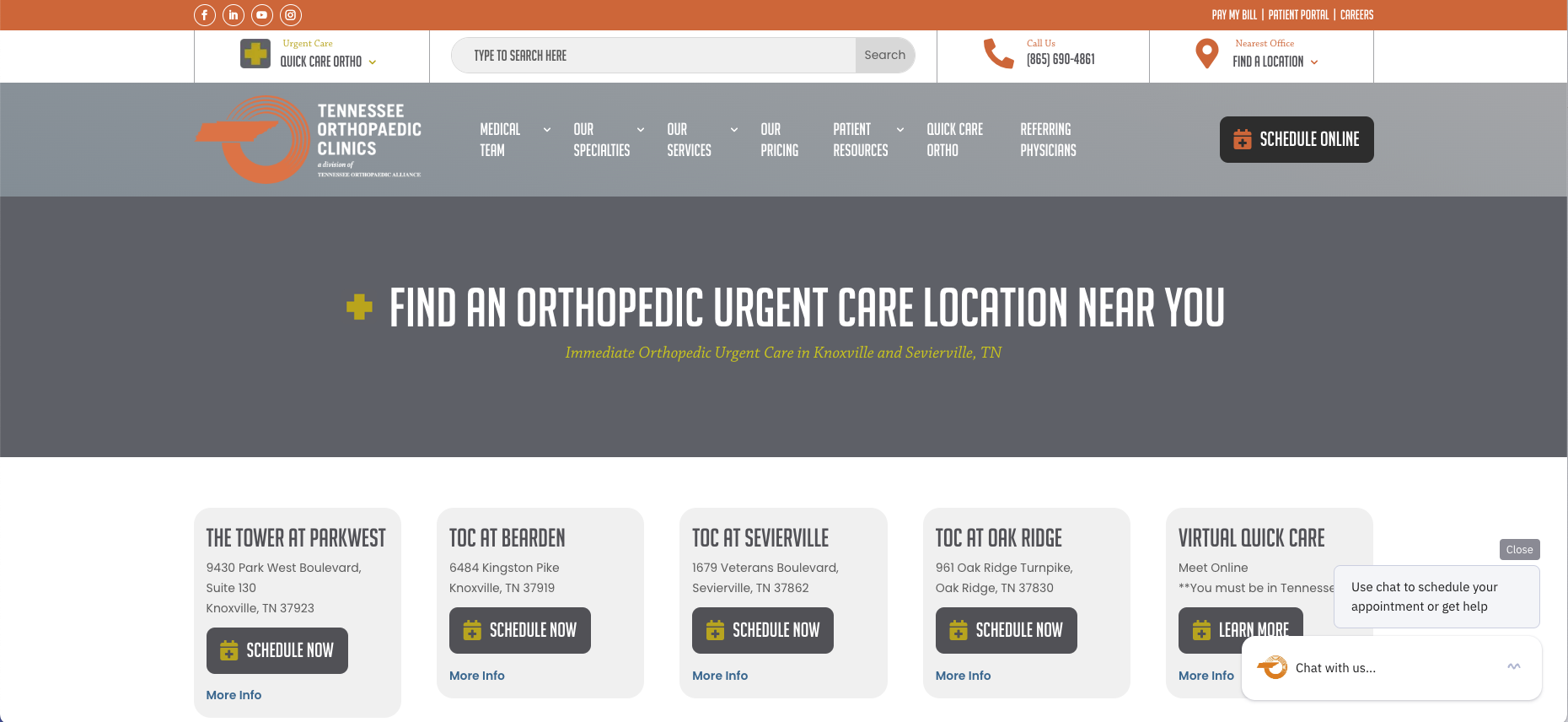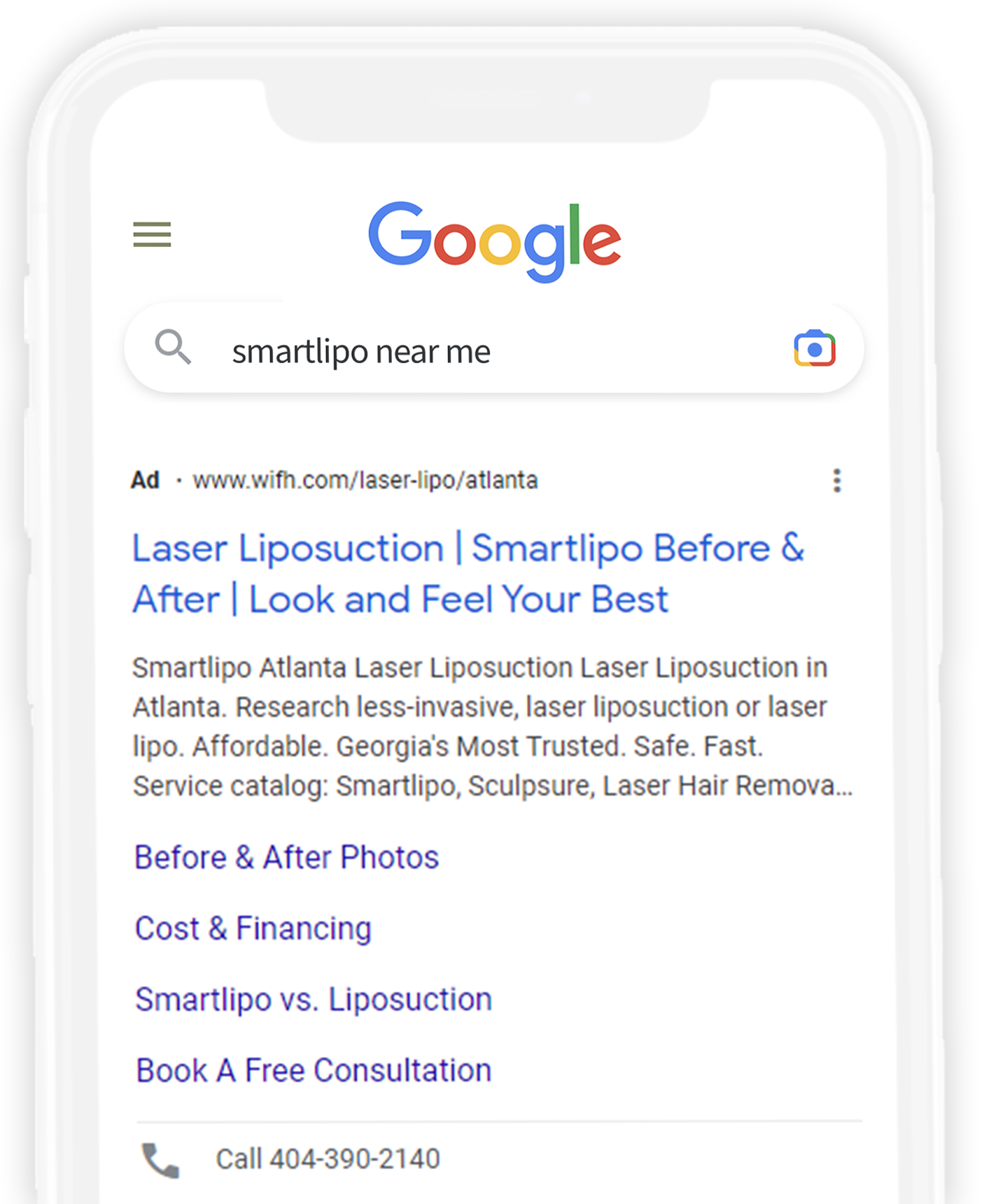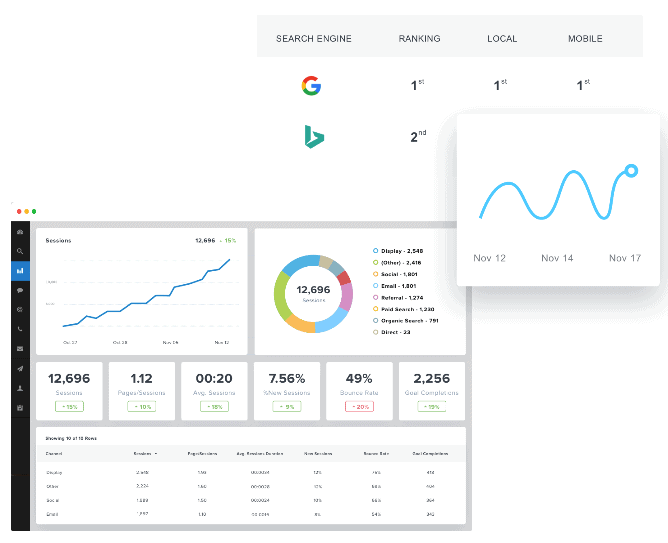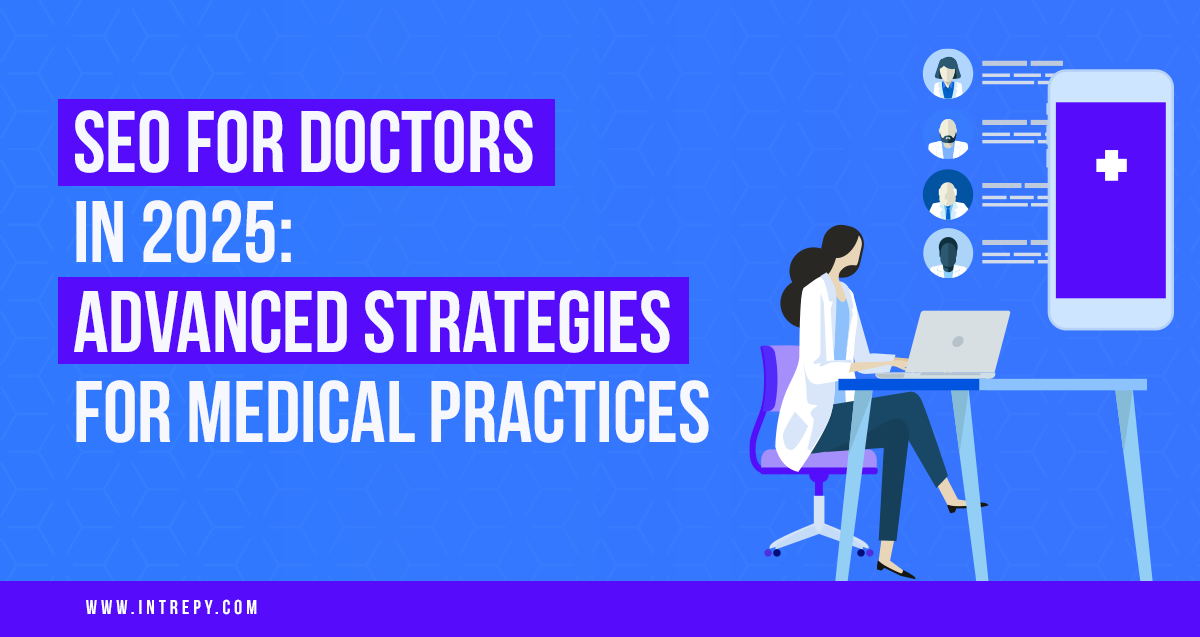The Top Medical Marketing Strategies for 2025
Putting together innovative medical marketing strategies for medical practices can be a daunting and often downright confusing endeavor.
With what seems like endless marketing and advertising channel options and oftentimes contradictory information online about what is the best fit navigating these waters can seem treacherous.
The last thing you want to do is end up making a wrong decision and spending time, money, and valuable resources to find out the initiative was a waste of time and ineffective at growing the practice.
That is why I have put together a list of proven medical practice marketing ideas for 2025
Medical Marketing Strategies Table of Contents:
- Your website is your #1 medical practice marketing asset
- Invest in social media marketing for doctors
- Win local search results for your leading treatments
- Invest in Google ads to book patient appointments
- Remarketing is critical to low ad conversion costs
- Programmatic display is a top ad channel to focus on
- Generate new patient reviews
- Start collecting and marketing patient video testimonials
- Introduce eCommerce for Self Pay Patients
- Add self-appointment capabilities to your medical practice marketing
- Generate new patient referrals through physician outreach
- Depend on medical marketing analytics to make decisions
1. Your Website is your #1 medical practice marketing asset
Today more than ever, potential patients are searching on the web for local physicians and healthcare services.
Patients are taking their health into their own hands and by doing so care more and more about establishing a know, like and trust relationship with a potential practice before walking through the doors or book an appointment.
Improving your patient’s experience on your website will significantly increase patient leads and retention.
Your medical website design should have customized features, fast page speed, and be mobile-friendly, and interactive.
Mobile-first design has been a given for websites for the past 3-4 years now.
So much so, that Google leverages what is called “mobile-first indexing” which means, by default, they primarily leverage the mobile version of a web page or website for indexing and SEO purposes.
This is huge, meaning the mobile design and optimization of your website might matter more than any other medical clinic marketing strategy on this list.
Without it, it will be difficult to grow your website traffic, especially medical SEO.
Check out this recent website launch for a client.
You will see the design transitions seamlessly from the mobile to desktop experience.
Meaning not only will it perform well in search but it will convert well via other medical practice marketing strategies like paid ads traffic (more on that to come).
Check out the video above for more website design tips to improve your medical practice marketing strategies.
2. Social Media grows if you have video content
Social media marketing is an essential part of great medical marketing strategies and will help you share content and reach your ideal patient base.
Social media can be an integral part of medical clinic marketing if it combines provider insights with video to engage existing and potential patients to drive new appointments and patient retention.
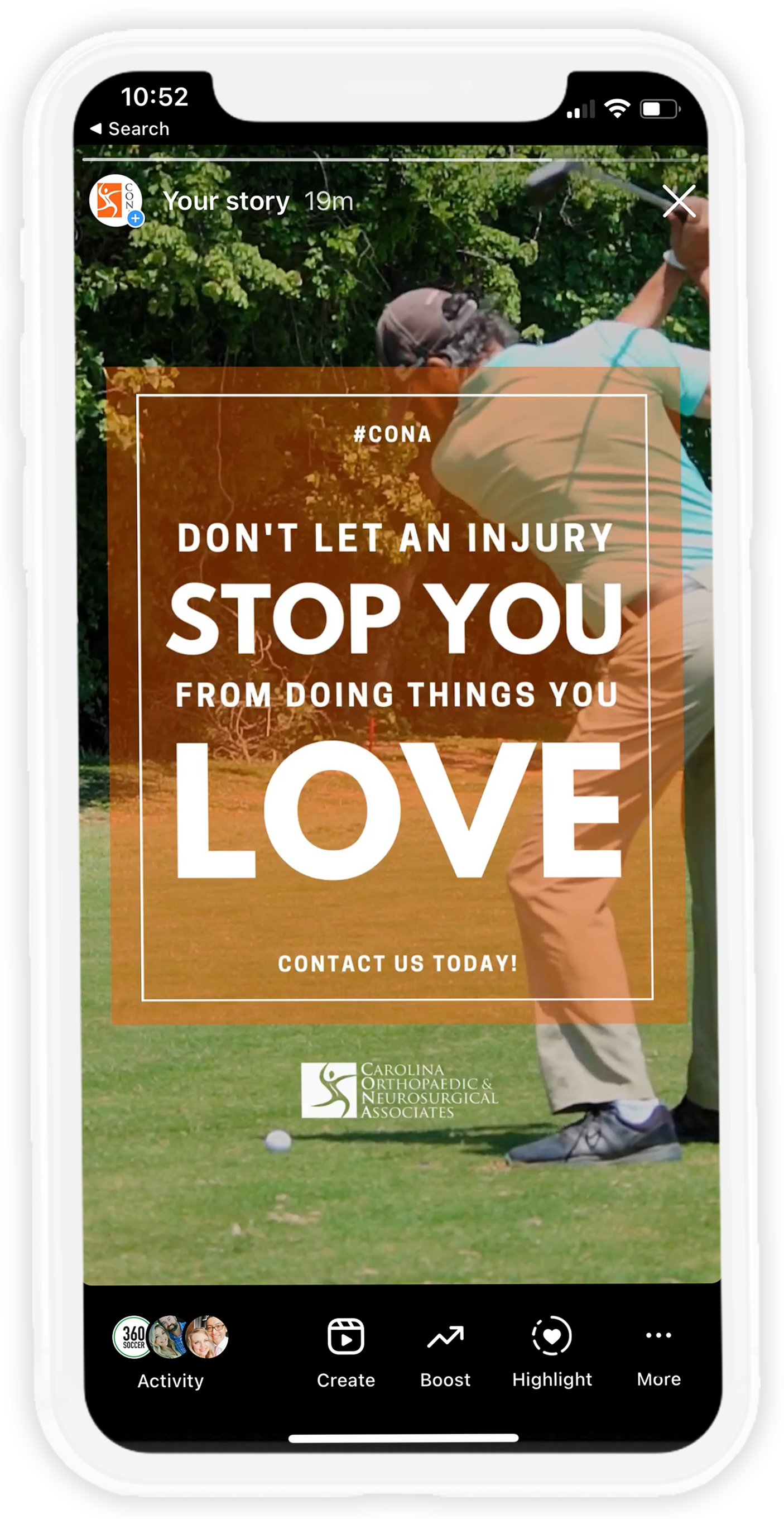
Too many practices lean on the “build it and they will come” medical marketing strategy when it comes to social media.
So they are left feeling like it provides little to no medical clinic marketing value in the grand scheme of things because they do not understand how to really grow.
Growth on social is about content, consistency and engagement.
First, it starts with combining content with consistency.
The easiest way to do that is to come up with a few or one “big idea” each month and build all your content around this.
Get your providers involved in creating short videos 1-2 minutes at the most around this idea.
If you do this 1 month ahead of time then you are able to just focus primarily each month on #2 engagement.
Instagram for medical practices is one of the better social channels to connect with your primary patient base through video and still graphical content.
If you are looking for help scaling your video efforts check out CaptureMD, our favorite tool to help physician create video content in under 90 seconds.
3. Win local search results for your leading treatments
Medical marketing is local when it comes to search results.
That means, if you are reading this as a brick and mortar practice you need to focus your SEO on ranking locally, not nationally for you primary treatments and services.
A big thing is if you want to rank for it locally YOU NEED A PAGE FOR IT.
That is a very dumb-down version to say you need well-structured and optimized pages for each of your core treatment and services pages.
Take a look at this orthopedic SEO client that we handle medical marketing strategies and local SEO for.
We optimized their orthopedic urgent care page to be well structured and contain local ranking signals such as “Knoxville” on the page.
As a result, they are ranking #1 in search results, and it is one of the top organic traffic-generating pages on their website.
Here are some essential tips to remember when creating or optimizing new pages on your website for SEO.
Another critical medical marketing tip for local SEO is to make sure you have individual pages for each location.
If you are a multi-location medical practice, develop a landing page for each dedicated location that you have.
Make sure you include the following items on the page:
- Google Business Profile embedded map
- The city name in the title tag and on the page several times
- Providers that see patients at that location
- A short write up about that location.
Follow these local healthcare SEO tips, and you will be on your way to outranking your local providers in search, which is key to a successful medical marketing strategy.
4. Invest in Google Ads to book patient appointments
Google ads is my favorite advertising platform for medical practice marketing strategies.
Why? Because of the patient search intent and the quality of the lead that tends to generate as a result.
What do I mean by “search intent”?
Search ads come with a natural “appointment” intent versus other ads platforms.

However, for example, if someone is searching on Google for a “frozen shoulder specialist near me” they are closer to booking an appointment and generally will require less touchpoints and be more a more qualified lead.
Above is an example of a Google Ad we developed to generate new patient leads and appointments for a medical spa treatment named Smartlipo.
We are able to target specific smartlipo keywords that potential patients search for in a 10-mile radius around each spa location an present ads at the top of Google search.
As a result, we generated dozens of appointments and leads per month for the client for a high-margin cash procedure leveraging Google ads.
5. Remarketing ads lower ad conversion costs for medical marketing
Remarketing ads can be an effective medical clinic marketing strategy to target individuals who have already shown interest in your medical practice.
To get the most out of remarketing you need to understand the different components of it.
When done right, remarketing ads should be a drive of low cost appointments.
For our clients. it consistently beats out other medical marketing strategies over time as a drive of new patient appointments.

1. Set up a Remarketing Tag:
To kickstart your remarketing efforts, it’s essential to install a remarketing tag or pixel on your website.
This code snippet allows you to track user behavior and create specific remarketing audiences based on their interactions with your site.
Remember to comply with relevant privacy regulations and obtain necessary consent for remarketing activities.
2. Define Your Remarketing Audiences:
Next, determine the audience segments you want to target with your remarketing ads.
Consider creating different audiences based on specific actions or interests.
For instance, you can target individuals who viewed specific treatment pages or those who initiated but didn’t complete an appointment booking.
Segmenting your audiences enables you to deliver more personalized and relevant ad experiences.
3. Set up Dedicated Remarketing Campaigns:
Create separate remarketing campaigns for each audience segment you want to target.
This allows you to optimize your messaging, bidding strategies, and ad placements based on the characteristics and preferences of each patient group.
4. Utilize Dynamic Remarketing:
With dynamic remarketing, you can showcase specific products or treatments that users previously viewed on your practice website.
This personalized approach increases the chances of converting those who have shown interest in your offerings.
5. Monitor, Optimize, and Iterate:
Regularly monitor the performance of your remarketing campaigns and leverage data-driven insights to make informed optimizations.
Track key metrics such as click-through rates, conversions, and return on ad spend (ROAS).
Experiment with different ad variations, landing pages, and audience targeting to find the most effective combinations.
Continuously iterate and refine your medical marketing campaigns to maximize their impact.
6. Programmatic Display Ads are a top medical marketing strategy to focus on
Programmatic display ads are an automated form of advertising that uses technology to streamline and optimize ad placement across multiple channels in real time.
Versus traditional ads, this is a powerful tool to target patients across an omnichannel advertising approach and drive more patient appointments.
Here are a few tips on how to get the most out of programmatic advertising:
- Define Your Target Audience
- Set Clear Objectives
- Utilize Data and Insights
- Develop Engaging Ad Creatives
- Leverage Contextual Targeting
- Implement Retargeting (see the section above!)
- Monitor, Optimize, and Refine
One of the many examples of how a practice can leverage programmatic advertising is creating a list of locations in the community that you know your ideal patient might frequent.
Then you can geofence those locations and add them to audiences as they visit them.
Once the potential patient is in an audience you can being to deliver video and still graphical assets across their smart devices and C-TV devices (Apple TV, etc.).
7. Generate new patient reviews
Patient reviews are one of the top 3 most important local SEO factors when it comes to local search rankings.
Studies have shown that 68% of potential patients form an opinion about your medical practice, and it’s physicians with as little as five reviews.
When choosing between two providers, a patient is 91% more likely to select the provider with higher reviews!
That is a huge deal. 9/10 patients will pick your competitor if your reputation is bad online.
What does this mean? Patient reviews are an essential way to convert potential patients and a huge reflection of your medical practice reputation.
When it comes to medical marketing strategies generating positive patient reviews needs to be at the top of the list!
We recommend leveraging technology to make sure you succeed in generating reviews.
That ensures easy practice adoption and program success.
The more you can automate, the more success you will have in generating new patient reviews.
And the more growth you will see in local search for your medical marketing.
8. Start collecting and marketing with patient video testimonials
In today’s digital age, potential patients seek authenticity and social proof when choosing a healthcare provider.
Patient video testimonials have emerged as a highly impactful medical marketing tool that can effectively build trust, credibility, and engage with your target audience.
When you begin to utilize them on your website and ad campaigns you will see high levels of engagement and better conversion rates.
Patients want to hear from other patients about their experiences and the quality of the care and providers at your practice.
This builds that know, like, and trust relationship before they ever walk through the door and can be the major difference in choosing your practice over a local competitor.
Because this process can be laborious for all parties involved we actually developed a tool named CaptureMD that allows you to easily send a link or email and a patient can leave a 50 second video testimonial on any device.
Check out the demo below on how the process works.
Either way, we highly recommend investing in this medical marketing strategy for your medical practice.
It will accelerate all the other strategies we cover in this article.
9. Add e-commerce solutions for self-pay patients
Self-pay has accelerated in recent years in the insurance-based practice space.
As premiums and deductibles continue to rise, more and more patients are willing and able to pay out of pocket for health services and treatments.
This creates a new medical marketing opportunity for practices to productize their treatments and conditions on their website in the form of an e-commerce site.
Give that 10% or more of the patients out there the ability to shop and check out for things like X-rays, new patient appointments or even procedures.
It will create a new revenue stream for the practice, add new medical marketing abilities and streamline work for the billing department.
We help our clients set up shops including orthopedic practices.
This allows us to leverage a lot of the medical marketing strategies mentioned in this blog to target “cash” or “self pay” patients in search and paid ads.
10. Add self-appointment capabilities to your practice website
Self-appointment booking software has been available for a long time to medical practice, yet it is still widely underutilized.
COVID lockdown accelerated the use of this but we need to bring it more into focus in 2025 as patients and medical marketers alike are asking for it.
Remove the friction and alleviate the burden on your intake staff. 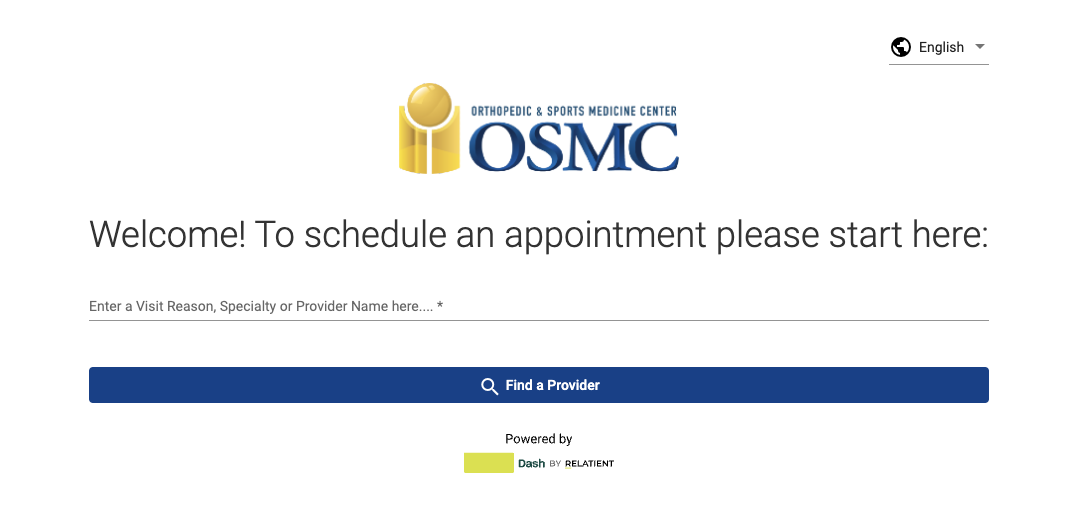
Check out this astounding stat from Physicians Practice:
If providers offer self-scheduling, their patients will use it. 95% of survey respondents have either booked a medical appointment online or would if it was available.
You cannot ignore numbers like that.
Not only does it eliminate friction but it provides better data and analytics on your marketing funnel is tracked in a secure manner.
11. Grow new patient referrals through physician outreach
Physician referrals can be the lifeline of a medical practice, so developing a physician liaison marketing program is essential for sustaining strong doctor referral relationships.
Successful marketing in healthcare will include efforts to expand your healthcare network and increase patient growth.
Physician liaison marketing is hiring a representative for your practice to meet with local referring doctors and medical practices to increase patient referrals for the practice.
As the physician relations representative, they extend the bridge of communication between referring doctors and their medical practice.
Referral outreach can result in a significant increase in patient referrals and overall practice growth.
Physician liaison marketing is especially an excellent fit for hospitals, surgeons, and specialty medical practices because their patient base is majority referrals from general practitioners.
Other medical practices can significantly benefit from having a physician relations manager to help grow their healthcare network and meet with local physicians.
Benefits of a Physician Liaison Program:
- Skilled physician liaison representative to promote the practice
- Connects medical practice and doctors with referring physicians
- Helps introduce new physicians to the healthcare community
- It provides a way to streamline referrals for primary care providers easily.
- Accessible point of contact for referring doctors for questions, concerns, or any other needs
- Marketing director for practice
- Increases patient referrals
- Increases high revenue procedures
- Increases overall practice revenue
- Track visits and builds the physician’s network
- Provides physician referral analytics
- Evaluates practice growth and creates a marketing strategy
- Easy to track success and ROI
Learn about our online physician liaison training program Physician Liaison University™.
12. Depend on medical practice marketing analytics to make decisions
Understanding the medical marketing efforts that are most effective for your medical practice requires proper tracking and data and analytics reports.
Tracking and analytics will give you a fully comprehensive report on the progress of the medical marketing for your practice.
With tracking and analytics, you can target and re-invest in the marketing efforts that have proven successful.
Dashboards are a fantastic way to see the executive-level health of your medical marketing program quickly.
At Intrepy, all of our clients get access to their very own marketing growth dashboards so they can see where they are at in their program at all times.
Google Looker Studio is also a powerful, free option to create visual dashboards.
Top Medical Marketing Strategies Wrap Up
While there are many more effective medical clinic marketing strategies, I believe these are some of the most effective you will find in 2025.
Leveraging new technologies and better data will help you continue to grow your practice as things change in the marketplace.
The beauty is that many of these items play directly off each other, and the effectiveness of one dramatically contributes to that of another.
As we mentioned in many other articles, whenever you add a new digital marketing campaign to your arsenal test, test, and retest one more time to make sure you are correctly optimizing all aspects of the campaign.
If you need support with these medical marketing strategies book a free video practice assessment with us. We would love to chat.
We hope you found these medical marketing insights and tips helpful! Thanks for reading.
Justin Knott, CEO
